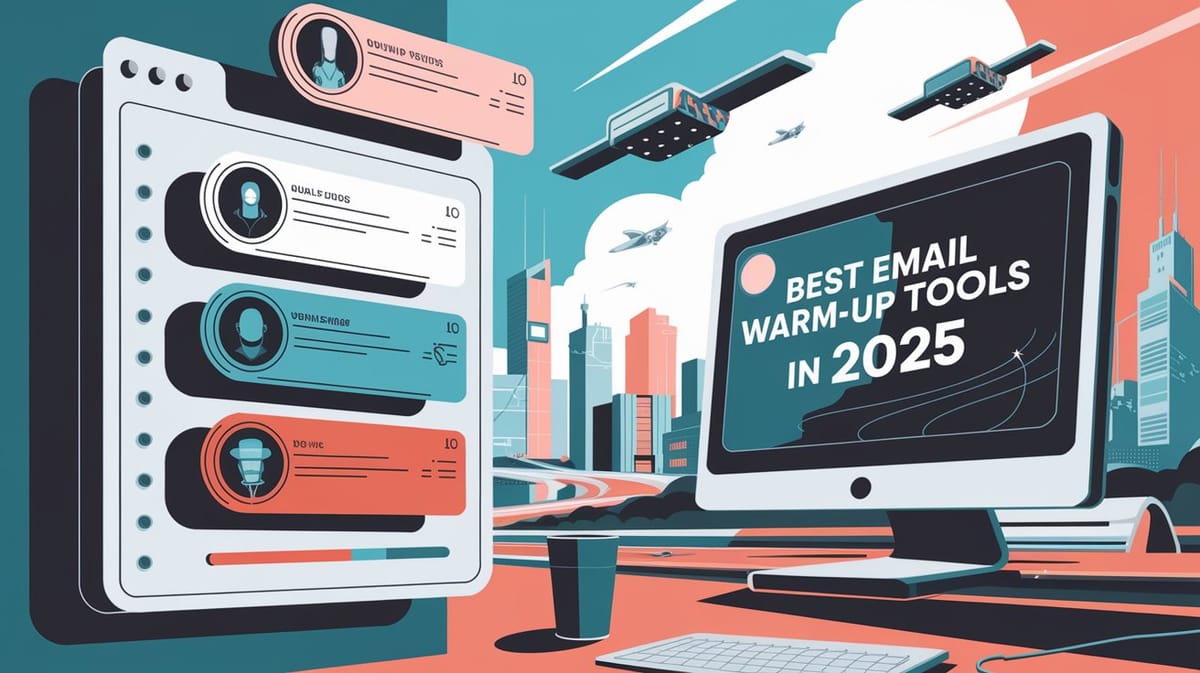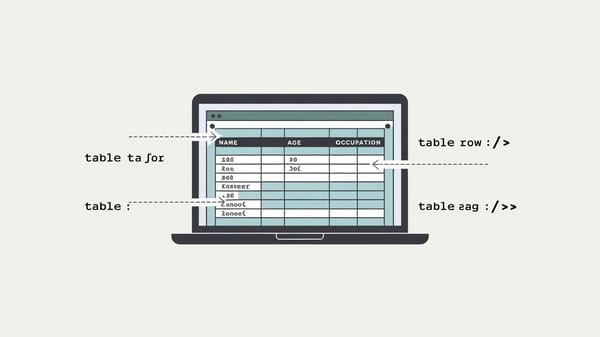12 Best Email Warm-Up Tools in 2025 - Features, Pros & Cons

Email Warm-Up Tools Compared
| Tool | Free trial | Entry price | Sender reputation monitoring | Personalized warm-up emails | Warm-up network tailored to your industry | Blacklist monitoring | Technical setup check |
|---|---|---|---|---|---|---|---|
| lemwarm | ❌ | $29/month | ✅ | ✅ | ✅ | ✅ | ✅ |
| Folderly | ✅ | $120 | ✅ | ❌ | ❌ | ❌ | ✅ |
| Warmbox | ❌ | $19/month | ✅ | ❌ | ❌ | ✅ | ✅ |
| Mailreach | ❌ | $19.5/month | ✅ | ❌ | ❌ | ✅ | ✅ |
| Warmup Inbox | ✅ | $19/month | ✅ | ❌ | ❌ | ✅ | ✅ |
| Mailwarm | ❌ | $69/month | ❌ | ❌ | ❌ | ✅ | ❌ |
| Warmy | ✅ | $49/month | ✅ | ❌ | ❌ | ✅ | ✅ |
| Inboxally | ❌ | $149/month | ❌ | ❌ | ❌ | ❌ | ❌ |
| Allegrow | ❌ | ? | ✅ | ❌ | ❌ | ❌ | ✅ |
| Mailivery | ✅ | $29/month | ✅ | ❌ | ❌ | ❌ | ✅ |
| TrulyInbox | ✅ | $39/month | ✅ | ❌ | ❌ | ❌ | ❌ |
| Warm Up Your Email by Mailshake | ❌ | $29/month | ❌ | ❌ | ❌ | ✅ |
In the ever-evolving landscape of digital marketing, email remains a cornerstone for effective communication and outreach. However, ensuring that your emails reach the intended inbox rather than being relegated to the spam folder is a challenge that many marketers face. This is where email warm-up tools come into play, offering a strategic approach to enhance email deliverability and maintain sender reputation.
As we step into 2025, the importance of these tools has only grown, with businesses increasingly relying on them to optimize their email campaigns. Email warm-up tools simulate authentic email interactions, gradually building a positive sender reputation and improving inbox placement. This report delves into the 12 best email warm-up tools available in 2025, providing a comprehensive overview of their features, advantages, and potential drawbacks.
Among the top contenders, Warmy.io stands out with its targeted strategies and multilingual capabilities, making it ideal for bulk email senders. Similarly, Mailwarm offers a range of packages to suit different needs, though it may lack some advanced features. Tools like Mailreach leverage machine learning and extensive networks to optimize deliverability, while Folderly uses advanced analytics for intelligent email warm-up.
You can also visit Oncely.com to find more Top Trending AI Tools. Oncely partners with software developers and companies to present exclusive deals on their products. One unique aspect of Oncely is its “Lifetime Access” feature, where customers can purchase a product once and gain ongoing access to it without any recurring fees. Oncely also provides a 60-day money-back guarantee on most purchases, allowing customers to try out the products and services risk-free.
Oncely are hunting for the most fantastic AI & Software lifetime deals like the ones below or their alternatives:

Key Features of Top Email Warm-Up Tools
Automated Warm-Up Processes
One of the primary features of top email warm-up tools is the automation of the warm-up process. This feature allows users to gradually increase their email sending volume without manual intervention, which is crucial for maintaining a positive sender reputation. Automated warm-up processes help in avoiding spam filters by simulating natural email sending patterns. Tools like Lemwarm and Warmup Inbox offer robust automation capabilities that adjust the sending volume based on the user's email engagement metrics and deliverability rates.
Customizable Warm-Up Schedules
Customizability is another significant feature offered by leading email warm-up tools. Users can tailor the warm-up schedules to fit their specific needs, allowing for flexibility in how quickly or slowly they want to ramp up their email sending volume. This feature is particularly beneficial for businesses with varying email marketing strategies and goals. According to Book Your Data, customizable schedules ensure that the warm-up process aligns with the user's marketing calendar and campaign objectives, providing a personalized approach to email deliverability.
Blacklist Monitoring and Spam Filter Testing
Blacklist monitoring is a critical feature that helps users identify if their domains or IP addresses are blacklisted by any email service providers. This feature, combined with spam filter testing, allows users to assess their email deliverability and make necessary adjustments to improve their sender reputation. Tools like Mailwarm provide comprehensive blacklist monitoring services, alerting users to potential issues that could affect their email campaigns. By testing against spam filters, these tools help ensure that emails reach the intended inboxes rather than being flagged as spam.
Detailed Reporting and Analytics
Top email warm-up tools offer detailed reporting and analytics features that provide insights into email engagement metrics such as open rates, click-through rates, and bounce rates. These analytics are essential for understanding the effectiveness of email campaigns and making data-driven decisions to enhance performance. As highlighted by Book Your Data, these tools offer quantified data reports that replace manual tracking methods, allowing users to monitor their progress and adjust their strategies accordingly. This feature is invaluable for marketers looking to optimize their email marketing efforts and improve conversion rates.
Security Features
Security is a paramount concern for any email marketing tool, and email warm-up tools are no exception. These tools are equipped with robust security measures to protect user data and contact information. Features such as encryption, secure data storage, and compliance with data protection regulations ensure that sensitive information is safeguarded against unauthorized access. According to Influenctor, security features are integral to maintaining trust with users and ensuring the integrity of email marketing campaigns.
Domain and IP Warm-Up Services
Domain and IP warm-up services are specialized features that focus on gradually increasing the sending volume for specific domains and IP addresses. This process helps establish a positive reputation with email service providers, reducing the likelihood of emails being marked as spam. Tools like Mailgun offer these services to ensure that emails are delivered to the inbox rather than the spam folder. By leveraging these services, users can automate and optimize the warm-up process, saving time and effort while maximizing deliverability.
Enhanced Engagement Metrics
Email warm-up tools contribute to higher engagement metrics by improving open rates, click-through rates, and click-to-open rates. These metrics are crucial for fostering better interactions with the audience and enhancing the overall effectiveness of email campaigns. As noted by Influenctor, building a positive reputation through email warm-up is essential for successful cold email outreach, as it establishes credibility and trust with recipients. By focusing on engagement metrics, these tools help users refine their content and presentation to better cater to their audience's preferences.
Integration with Email Marketing Platforms
Integration capabilities are a key feature of top email warm-up tools, allowing them to seamlessly connect with popular email marketing platforms. This integration enables users to manage their email campaigns more efficiently by synchronizing data and automating processes across different platforms. Tools like Warmup Inbox offer integration with platforms such as Mailchimp, HubSpot, and Salesforce, providing a unified approach to email marketing. This feature enhances the user experience by streamlining workflows and reducing the need for manual data entry.
User-Friendly Interface
A user-friendly interface is essential for ensuring that email warm-up tools are accessible to users of all skill levels. These tools are designed with intuitive dashboards and easy-to-navigate menus that simplify the process of setting up and managing email warm-up campaigns. According to Book Your Data, a well-designed interface enhances the user experience by making it easier to access key features and monitor progress. This feature is particularly beneficial for small businesses and individuals who may not have extensive technical expertise.
Cost-Effectiveness
Pros and Cons of Popular Email Warm-Up Tools
Smartlead
Pros:
- Comprehensive Features: Smartlead is recognized for its extensive features, including unlimited mailboxes and automated email warm-ups, which are crucial for ensuring high deliverability rates (Smartlead).
- Omnichannel Outreach: The tool supports omnichannel outreach, making it versatile for various marketing strategies.
- User-Friendly Interface: Users appreciate its intuitive interface, which simplifies the process of managing multiple email campaigns.
Cons:
- Pricing Complexity: While Smartlead offers a range of features, the pricing structure can be complex, potentially leading to higher costs for businesses with extensive needs.
- Learning Curve: New users might face a learning curve due to the tool's comprehensive nature, requiring time to fully utilize its capabilities.
Lemwarm
Pros:
- AI-Driven Warm-Up: Lemwarm leverages AI to enhance email deliverability, providing reputation monitoring and detailed reporting (Lemwarm).
- Integration with Lemlist: It integrates seamlessly with Lemlist, offering additional functionalities for users already utilizing Lemlist for their email campaigns.
- Cost-Effective Options: Lemwarm offers a standalone plan at $24/month per inbox, making it an affordable choice for small businesses.
Cons:
- Limited Free Features: While Lemwarm offers a free deliverability test, most advanced features are locked behind paid plans.
- Network Size: The tool's network of warm-up inboxes is relatively small compared to competitors, which might limit its effectiveness in large-scale operations.

Mailwarm
Pros:
- Peer-to-Peer Warm-Ups: Mailwarm uses a peer-to-peer system for email warm-ups, which can enhance authenticity and engagement (Mailwarm).
- SMTP Integrations: It supports SMTP integrations, allowing for flexibility in email sending setups.
- Unlimited Mailboxes: At higher tiers, Mailwarm offers unlimited mailbox warm-ups, beneficial for large organizations.
Cons:
- Basic Features: Mailwarm is considered a basic tool without advanced features, which might not meet the needs of users requiring more sophisticated functionalities.
- High Cost for Basic Plan: The basic plan starts at $90/month for 50 email inbox warm-ups, which can be expensive for small businesses.
Warmy
Pros:
- High Volume Capability: Warmy allows for sending up to 5,000 daily warm-up emails on its platinum plan, making it suitable for bulk email senders (Warmy).
- Multilingual Support: It supports sending warm-up emails in multiple languages, not just English, which is advantageous for global outreach.
- Advanced Engagement Features: Warmy includes features like link clicks and email scrolling, which help build trust with email service providers.
Cons:
- Cost Considerations: The advanced features and high volume capabilities come at a premium price, which might not be feasible for smaller businesses.
- Complex Setup: Users have reported that setting up Warmy can be complex, requiring technical knowledge to optimize its use.
Inboxally
Pros:
- Advanced Engagement Techniques: Inboxally offers unique features such as scrolling down on warm-up emails and clicking on links, which enhance engagement metrics (Inboxally).
- Spam Recovery: It includes functionalities to move emails from spam to inbox, improving sender reputation.
- Integration Capabilities: Inboxally integrates with various email platforms, providing flexibility in its application.
Cons:
- High Cost: Inboxally is considered an expensive option, which might not be justifiable for businesses with limited budgets.
- Limited User Base: Due to its cost, the tool might not be accessible to smaller businesses or startups.
Warmbox
Pros:
- Large Network: Warmbox boasts a network of 35,000 inboxes, which is beneficial for improving email deliverability (Warmbox).
- GPT-4 Generated Emails: It uses GPT-4 to generate warm-up emails, enhancing the quality and engagement of email interactions.
- Focus on Deliverability: Warmbox is specifically designed to address low open rates, making it a targeted solution for deliverability issues.
Cons:
- Pricing Structure: The pricing details are not readily available, which can be a barrier for potential users evaluating cost-effectiveness.
- Complexity in Use: The advanced features might require a steep learning curve for users unfamiliar with AI-driven tools.

Mailreach
Pros:
- Machine Learning Optimization: Mailreach uses machine learning to optimize email deliverability, ensuring emails land in inboxes rather than spam folders (Mailreach).
- Extensive Network: It utilizes 20,000 inboxes from real accounts, providing a robust network for warm-up activities.
- Competitive Pricing: Mailreach offers a 7-day free trial and competitive pricing, making it accessible for businesses of all sizes.
Cons:
- Limited Advanced Features: While effective, Mailreach may lack some of the advanced features found in more expensive tools.
- Potential Overhead: Managing a large number of inboxes might require additional resources, which could be a challenge for smaller teams.

QuickMail Auto-Warmer
Pros:
- Integration with Gmail and Outlook: QuickMail Auto-Warmer is praised for its easy integration with popular email platforms like Gmail and Outlook (QuickMail).
- Moderate Pricing: It offers moderate pricing, making it a viable option for businesses looking for cost-effective solutions.
- Strong User Ratings: The tool has received strong ratings on platforms like G2, indicating user satisfaction with its performance.
Cons:
- Limited Features: Compared to other tools, QuickMail Auto-Warmer might offer fewer features, which could limit its appeal to users seeking comprehensive solutions.
- Manual Warm-Up Focus: While it supports automated processes, the tool is particularly useful for manual warm-up, which might not suit all users' preferences.
Allegrow
Pros:
- Direct Integration: Allegrow integrates directly with email sender tools like Google Workspace and Office 365, streamlining the warm-up process (Allegrow).
- Focus on Deliverability: It is designed to improve inbox placement and email deliverability, addressing common challenges in email marketing.
- Versatile Application: Allegrow's integration capabilities make it versatile for various business applications.
Cons:
- Pricing Uncertainty: The lack of transparent pricing details can be a deterrent for potential users evaluating its cost-effectiveness.
Pricing and Plans for Email Warm-Up Tools in 2025
Overview of Pricing Models
Email warm-up tools in 2025 generally offer a variety of pricing models to cater to different user needs, ranging from individual freelancers to large enterprises. The most common pricing structures include subscription-based models, pay-as-you-go plans, and tiered pricing based on the number of email accounts or volume of emails processed. These models are designed to provide flexibility and scalability, allowing users to choose plans that best fit their operational requirements and budget constraints.
Subscription-Based Plans
Subscription-based plans are the most prevalent pricing model among email warm-up tools. These plans typically offer monthly or annual billing cycles, with discounts often available for annual commitments. For instance, Lemwarm offers a basic plan starting at $29 per month, which includes features such as automated warm-up processes and blacklist monitoring. More comprehensive plans, which may include advanced analytics and integration capabilities, can range from $49 to $99 per month.
Similarly, Warmbox provides a tiered subscription model, with prices starting at $15 per month for basic features. Their premium plan, which includes enhanced engagement metrics and priority support, is priced at $79 per month. These subscription models are ideal for users who require consistent and predictable billing, along with access to a full suite of features.
Pay-As-You-Go Options
For users who prefer more flexibility, some email warm-up tools offer pay-as-you-go options. This model allows users to pay only for the services they use, without the commitment of a monthly subscription. Mailwarm, for example, offers a pay-as-you-go plan where users are charged based on the number of emails warmed up. This can be particularly advantageous for businesses with fluctuating email volumes or those who only need warm-up services occasionally.
Pay-as-you-go plans are typically priced per email or per batch of emails, with costs varying depending on the provider and the volume of emails. This model provides a cost-effective solution for users who need flexibility and control over their spending.
Tiered Pricing Based on Email Volume
Many email warm-up tools implement tiered pricing structures based on the volume of emails processed or the number of email accounts managed. This approach allows users to scale their plans according to their needs. For instance, Warmy offers a tiered pricing model where the cost increases with the number of email accounts. Their basic plan, suitable for small businesses, starts at $49 per month for up to 5 email accounts, while larger enterprises can opt for plans supporting up to 50 accounts at $199 per month.
This tiered approach ensures that users only pay for the capacity they require, making it a scalable option for growing businesses. It also allows providers to cater to a wide range of customers, from small startups to large corporations.
Free Trials and Freemium Models
To attract new users, many email warm-up tools offer free trials or freemium models. These options allow potential customers to test the service before committing to a paid plan. Mailreach, for example, provides a 7-day free trial with access to all features, enabling users to evaluate the tool's effectiveness in improving email deliverability.
Freemium models, on the other hand, offer a limited set of features for free, with the option to upgrade to a paid plan for additional capabilities. This model is particularly appealing to individual users or small businesses with limited budgets, as it allows them to benefit from basic warm-up services without incurring costs.
Enterprise and Custom Plans
For large organizations with specific needs, many email warm-up tools offer enterprise or custom plans. These plans are tailored to meet the unique requirements of large-scale operations, often including dedicated account management, custom integrations, and enhanced security features. QuickMail Auto-Warmer provides custom pricing for enterprises, which can include features such as API access and advanced reporting tools.
Enterprise plans are typically negotiated on a case-by-case basis, with pricing dependent on the scope of services required. This flexibility allows large organizations to implement comprehensive email warm-up strategies that align with their operational goals and security standards.





